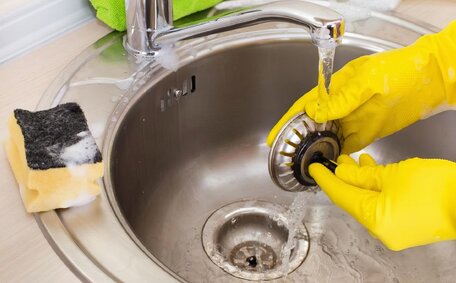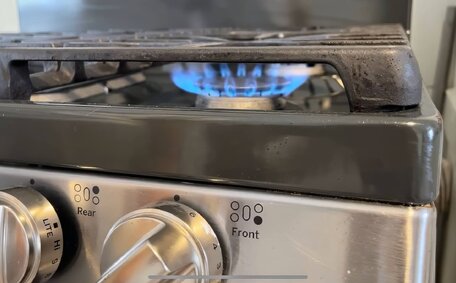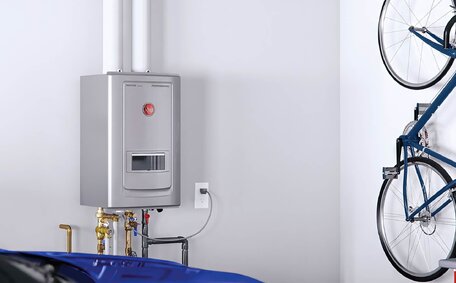Understanding How Mould Grows After Water Leaks
Mould prospers in warm settings with high humidity and moisture. Water leaks frequently cause mould by infusing materials such as walls, floors, and ceilings with moist air and excess moisture. Within 24-48 hours of water exposure, mould spores, already present in the air or on surfaces, initiate mold growth when there’s sustained dampness and spread quickly.
Materials such as drywall, wood, carpeting, and insulation are prime for mould in damp areas like basements, offering ideal conditions for mould proliferation post-water infiltration. Minor leaks can escalate into considerable mould problems if the affected area does not dry properly.
Prompt repair of water intrusion sources is critical for property health and mould removal, ensuring indoor air quality is not compromised.
Good ventilation via windows and vents, along with controlled humidity, is essential to preventing recurrent mould and maintaining healthy indoor air quality.
Health Risks From Mould Exposure
Exposure to mould can lead to health issues that significantly impact wellbeing. Common adverse health effects include headaches, fatigue, rashes, and respiratory issues. Moulds that thrive on plant and animal matter release spores and toxins, leading to environmental health concerns by irritating the eyes, skin, and other organ systems upon inhalation.
Individuals with asthma or compromised immune systems need protective measures against health issues induced by mould.
Children and the elderly, identified as high-risk groups by health authorities, face greater risks.
If you are experiencing persistent health issues and suspect mould exposure, contact your healthcare provider and find out more about addressing the underlying moisture sources feeding the growth. Prompt mould removal, when combined with medical care, mitigates symptoms and avoids long-term health issues caused by toxicity or infections.
Contact our office or visit our website today to schedule an inspection or discuss your health concerns.
Finding and Stopping the Water Source
It’s critical to detect and mend any water leaks to effectively stop mould in its tracks. There are several areas like your bathroom to check within homes and businesses for potential leaks:
- Faucets and shower heads - worn washers can allow water to drip into sinks and tubs.
- Gutters and downpipes - improper alignment or blockages can prevent proper drainage and cause water to overflow, introducing moisture into your home through open structural vulnerabilities.
- Toilets - cracks in the tank, bowl, or wax ring can leak water.
- Hot water heaters - leaks often occur from faulty valves, pipes, or walls including blocked drain systems.
- Exterior structures, such as roofs walls including areas where gutters are obstructed, can invite water intrusion during heavy rain through cracks or gaps.
An unexpectedly high water bill can indicate hidden leaks, introducing moisture into your home from within walls or beneath floors.
Regularly checking for moisture near doors and windows enables prompt identification of issues. Upon detection, immediately seal leaks to mitigate mould risk. Water sensors in moisture-prone areas can help monitor humidity levels, ensuring your home stays leak-free.
For intricate leaks that could lead to mould in several areas, consult a licensed mould remediation expert.
Thoroughly Drying Affected Areas
Preventing mould after water damage hinges on ensuring there is no prolonged dampness since mould requires adequate moisture to survive.
Employ dehumidifiers, fans, sunlight, and open windows, and maintain efficient operation of your air conditioning systems to ensure consistent drying. Dehumidifiers play a crucial role by extracting moisture and lowering the surface humidity, preventing mould-friendly conditions. Placing fans near windows optimises air circulation, ensuring fresher air throughout your home and complementing the drier conditions outdoors.
Residual moisture trapped in fibres beneath materials like carpet and furniture walls poses a mould risk. Enlist professional assistance for drying post-flood to thwart hidden mould dissemination. Before rebuilding or covering, it is advisable to completely remove moisture, reducing materials’ moisture content to below 20%.
Safe Mould Removal Techniques
For DIY mould removal, it’s imperative to use safe cleaning methods that minimise your exposure. Choose mild, natural cleaners for small mould patches on durable surfaces such as tiles or metal. Tea tree oil is effective for non-porous surfaces, while permeated materials like drywall may require replacement.
Safely Cleaning Mould
To remove surface mould from non-porous surfaces like glass, plastic or metals:
- Wear protective gear like gloves, goggles, masks, and clothing that shields your skin.
- Mix a gentle cleaning solution, combining 1 part vinegar with 4 parts warm water, or opt for an eco-friendly hydrogen peroxide cleaner.
- Scrub the mouldy areas with a stiff brush, rinsing it often in clean water to prevent spreading mould spores.
- After cleaning, thoroughly rinse and dry surfaces before undertaking any repainting or caulking.
Avoid using bleach or ammonia mixtures, as they can react with mould to release toxic fumes. Resort to bleach or stronger fungicidal products only if mild cleaning does not effectively remove stubborn mould.
When to Discard Affected Items
Porous materials like drywall, insulation, carpeting or ceiling tiles may be impossible to fully clean if they remain damp or have extensive mould growth. Such items require removal and replacement to prevent health hazards.
If you’re uncertain about the extent of mould spread or if health concerns necessitate precautions, consult professional mould inspectors.
Preventing Future Mould Growth
There are several effective strategies on how prevent mold recurring after remediation:
Routine Maintenance
- Conduct regular checks for new leaks and ensure prompt repairs
- Indoor humidity should be kept ideally between 30% and 50%.
- Use dehumidifiers to remove excess moisture, which can lead to mould, from the air
- Boost ventilation by opening windows and using fans.
- Allow sunlight in to discourage mould growth.
Moisture Prevention
Control moisture in kitchens, bathrooms and laundry areas:
- Use exhaust fans, open windows, and ensure clear pathways for ventilation to circulate air when cooking, showering, or doing laundry
- After activities, promptly wipe down surfaces to eliminate condensation
- Attend to leaky plumbing fixtures without delay
- Ensure clothes dryer systems are properly vented outdoors
Ongoing Assessments
Conduct thorough inspections of less ventilated areas in your property quarterly for early detection of moisture or mould. Professional assessments can help unveil concealed problem areas. Swiftly addressing moisture issues is crucial to avert recurring hazardous mould infestations.
When to Call a Professional Plumber
In certain situations, DIY mould remediation efforts may be insufficient or even make problems worse. Calling a professional plumber is advisable in scenarios such as:
Recurring Mould Issues
If mould continues to return after initial cleaning attempts, there may be an underlying moisture issue that requires expert diagnosis and repairs. Complex leaks in plumbing systems can allow moisture to spread in hard to reach areas, enabling mould to continually regrow.
Large Impacted Areas
Attempting to clean mould from large surface areas on your own can increase health risks from exposure and spread spores further if done incorrectly. Employing a professional service, specialists have the means to clean up large areas contaminated with mould effectively and safely.
Toxic Mould Detection
Dangerous mould varieties like black mould, which threaten the sanctity of your environment, require certified testing and remediation protocols that typical DIY cleaners are not equipped to handle. Trying to address toxic mould puts health at serious risk if proper protective procedures are not strictly followed.
At Pennant Hills Plumbing, our licenced technicians have the expertise to fully investigate persistent moisture issues leading to repeat mould outbreaks. We identify all plumbing system leaks and take effective actions to stop water ingress for good. Our professional mould removal process adheres to strict safety guidelines.
For prompt assistance with serious mould issues, recurring outbreaks, or suspected toxic mould cases, discover our professional mould cleaning services by contacting our office today at 1300 349 338 or navigate to our website to schedule an inspection or discussion regarding your mould concerns. Explore our website to discover how online requests for appointments and detailed information can further your understanding of mould prevention and treatment.






